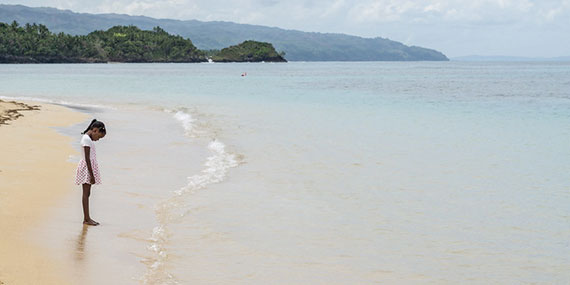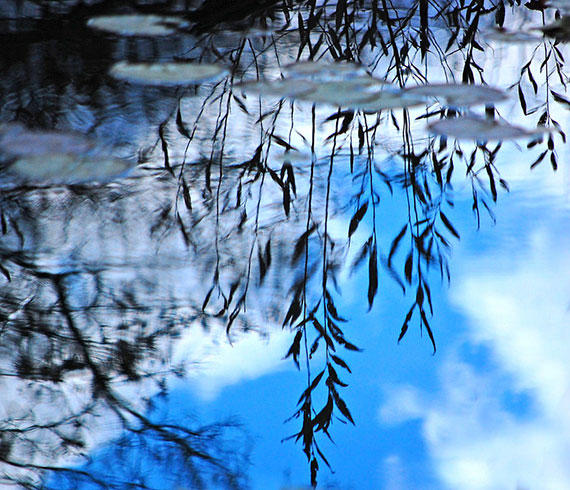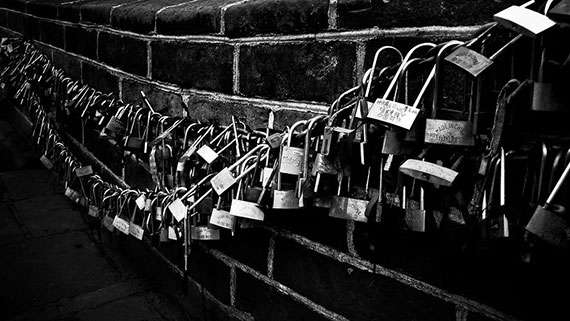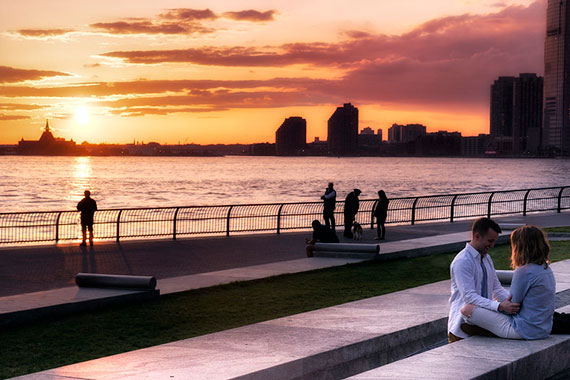There exists an ageless Cherokee Native American proverb that states “Don’t let yesterday use up too much of today”. The point being that most of us tend to spend vast amounts of time and energy worrying about the past or planning for the future. Not that neither the past nor the future are irrelevant, it is just that we sometimes forget about the significance of the present.

Photo by rey perezoso; ISO 100, f/11.0, 1/200-second exposure.
“The irrepressible Leo Buscaglia also once said that “Life lived for tomorrow will always be just a day away from being realized”.
Living and appreciating the present is an interesting concept that very few people would disagree with, yet as a collective species humanity seems oblivious as to how to achieve this on a consistent basis, almost as if the propensity not to live in the present is hard-coded into our DNA.
We instinctively avoid pain and failure at all costs, and will go to disproportionate lengths to plan around it, or once the experience has resolutely manifested itself and become resident in our lives, we very often spend huge chunks of our lives being trapped by the perceived unfairness of the situation, as opposed to understanding the life lesson or the opportunity to improve our skills. When one door closes we spend an eternity gazing at the closed door, as opposed to seeing a new door opening. And of course we are all task masters in seeing this in other people, yet we remain blind, and largely oblivious to introspection, in terms of seeing it in our own lives.
In our modern 21st century we find ourselves continuously bombarded with sounds and sights. From the every-engaging media of TV, internet, cell phones, to our daily plethora of blogs, emails and SMSes. The danger is we are at risk of becoming observers, as opposed to participants of life. We think the more we buy the happier we will be, whereas the truth is just the opposite. The consumers are being consumed.
OK but what is the relevance to photography and is there any opportunity to take a photograph from a more holistic, Zen perspective. Photography after all personifies one of the tenants of modern day technology, with the ultimate photograph being supported by the ultimate shutter speed, depth of field and Photoshop skill. Editing of photographs has become a billion dollar industry with the best science and technology resources available.
We have superb cameras, excellent lenses, detailed software and brilliant training courses. A photograph is no longer just a simple illustration of a physical set of circumstances, it now represents a personal story intertwined with the creative signature of the photographer.

Photo by Daniel Hoherd; ISO 200, f/22.0
With all this science and primordial structure there appears to be little time for imagination and creativity. Most of the professional solutions now have engineered and predicted outcomes, right? Wrong. Both the potential and perceived opportunity for a more holistic approach to photography exists now, more than ever. Photography and clairsentience, once mutually exclusive, are now potentially powerful allies.
Both Bill Harris and Deepak Chopra talk about the concept of being and living the Silent Witness in our lives, where essentially we need to endeavor to detach ourselves from detailed circumstances, no matter how complex or painful, and assume a position of a silent witness, that essentially observes events as they unfold. The concept is one of impartial observation, remaining uncontaminated from the detail of the actual experience, whereby the participant does not resist what he or she is experiencing, but rather try’s to understand it from a higher perspective and benefit from the lessons of life.
Now transpose this into an approach for photography and it becomes interesting.
Realistically how does a photographer employ a more right-brained, intuitive, Zen approach to the seemingly mechanistic function of taking good photographs? Whilst a lot has been written, and even philosophized about holistic photography, most of it is conceptual at best, and tends to be frustratingly esoteric in terms of application. When it comes to recommended method or technique the landscape remains barren.
A suggested, practical perspective is one, or a combination of the individual approaches below, some admittedly more unconventional than others.
- Try meditating before going on a shoot. Spend about 20 minutes on your own and quieten your mind, concentrating on your breathing. Ensure you will not be interrupted, turn off your cell phone and go within.
- Experiment with one of two meditation techniques. Either employ a more transcendental approach and completely empty your mind and close down the “inner chattering” of thoughts we constantly experience. Try and be one with the universe, in complete silence. Rumi, the famous 13th century Persian poet was quoted as saying that “silence is the language of God, all else is poor translation”.

Photo by Steve @ the alligator farm; ISO 400, f/5.6, 1/1250-second exposure.
Alternatively employ a contemplative meditation characterized by visualization. Visual your day and in particular visualize your actual shots. Use as much detail as possible and visualize the actually photography as complete. Experience the feeling of satisfaction you feel when you see the photographs. Actually act and feel as if it has already occurred, as if you have already captured the most incredible images and your audience is enthralled with the photographs. Express your gratitude to the universe at the end of the meditation.
- When you arrive at the site imagine the geographical landscape as being a projection of your consciousness. As a consequence imagine you have full control over all the shots and you have the ability to exploit all variables to your advantage.
- Get emotional about the individual shots and see the camera as being an extension of your imagination. When shooting “feel” the shot and the timing of pressing the shutter. Allow yourself creative expression. If your inner voice suggests something unusual or unorthodox, listen to it. Be brave and take some risks.
- Where possible try and communicate with your subject manner, including inanimate objects. Try and understand what the subject manner would like to see as a photograph. In your mind eye, ask. Literally ask the subject matter for a perspective and be receptive to what you get. Trust your instincts. Do not question or criticise the response. Where appropriate adapt or modify your shot accordingly.
- Consider doing a course in Feng Shui to better understanding the concept of energy flow, and how you can apply that in your photography. If you enjoy photography you are probably already in tune with your intuition. This will amplify your intuition.
- As a general approach do the exact opposite of the photography clique. Hide nothing and share everything. Add as much value as possible to your perceived opposition as you can. Share your most intimate technical skill and encourage your peers to engage with you wherever possible. Be kind, as opposed to judgmental, even when you clearly hold the high ground or the technical savvy. Be spontaneous and commit random acts of kindness, both with your photography comrades and people in general. This is an approach that is untenable to the vast majority of people. Be brave and try it. Do not be surprised when your life changes for the better. The universal law of reciprocity is the more your give the more you get.

Photo by Aftab Uzzaman; ISO 100, f/2.8, 1/320-second exposure.
- When faced with a complex shoot try for a moment engaging the situation from a silent witness perspective. In other words endeavor to momentarily quieten the inner chattering of your mind and allow yourself to become completely detached from the physical proximity of the shoot. Do not be afraid to actually picture yourself positioned above the physical situation, looking down. Try and see a different or unique perspective from your point of curious observation.
- When shooting on the day allow yourself to experience the duality of both your specific photographic experience and the holistic Zen experience you are exposed to simultaneously. Even just understanding the parallel experience will enrich your perspective.
- Attempt to be as intuitive as possible. Apart from “feeling” the shot and being synchronistic with respect to your actual timing of each individual photograph, endeavour to actually develop your intuition as one of the tools of your toolbox. Intuition looks for connections between parts and takes in the whole. Einstein once claimed that his great ideas occurred to him first intuitively and that afterwards he would verify them logically. Trust what first comes into your head in any particular circumstance, no matter how bizarre.
A program to develop your intuition as a technical skill would include the following:
- Observe and monitor under what circumstances you get your best ideas. Try and identify any pattern associated with this and develop a ritual to encourage the generation of ideas. Try and understand specific detail, eg do you “see” an answer in your mind’s eye, do you “hear” an answer or do you “feel” an answer?
- Become attuned to what is happening in both your external and internal environments at all times. Be cognizant of synchronicity and do not dismiss your dreams. Keep a dream diary and an intuition diary.
- Pay attention to any hunches that you feel at any time. Notice all your impressions without being judgmental or dismissive.
- Make circumstantial decisions based on questions. In your mind’s eye ask questions all the time. What is the best angle, what is the best lighting, how close or far away should I be from the subject matter, when should I take the photo etc. Trust the answers you get intuitively.
- If you find that no matter how hard you try you get no intuitive response, try using an external tool, eg a pendulum.
- As a photographer you will probably always use a specific eye to look through your view finder. Occasionally try taking a shot using your other eye.
More specifically on one level fully understand and experience your shoot from the photographer’s perspective, including the subject matter and geographical landscape, applying everything you know. Lose track of time and have fun. One another level simultaneously acknowledge and be cognizant of the parallel experience of being human in a universal context.

Photo by Rick Schwartz; ISO 100, f/8.0, 1/100-second exposure.
Enjoy the warm breeze on your face, marvel at the multiplicity of colors that exist in the manicured gardens, appreciate the nervousness manifest in the people you are shooting or alternatively observe say the erosion evident in a landscape. Observe the detail of a weathered face of an elderly person, indicative of a robust life in challenging conditions. Understand that we are all participants in a universal play. Everyone, or everything has a story to tell. Ensure you are a receptive audience and be thankful that you have been privileged enough to be part of the holistic experience. Enjoy each day as it unfolds.
About the Author:
Hannalee is a wedding photographer from Johannesburg, South Africa ( http://www.hannalee.co.za ). She offers couples compelling storytelling imagery, coupled with a specific creative signature, and shoots weddings across South Africa and abroad. Hannalee also offers resources to photographers in terms of particular product niches, original photography articles and the opportunity to market themselves.
Like This Article?
Don't Miss The Next One!
Join over 100,000 photographers of all experience levels who receive our free photography tips and articles to stay current:






Ken Rockwell gets a lot of crap, but I believe he spoke very well on this subject:
“The more decades I do this, the more I realize everything in photography comes down to one word: vision. Call it vision, imagination, or seeing; it all comes down to the same thing: the ability to envision a final result in your mind’s eye, and then to make it so with your tools at hand. ”
Excellent post and I agree completely that an image is more than technique and the correct camera settings.
I read lots of technical advice about how to take a better picture, and I tend, when shooting, to become immersed in fiddling with camera settings. It was great to read an article that can help me connect with the photo’s subject again and think beyond the settings.
I’m delighted to see this meditative aspect of photography addressed — beyond the technical, to a place where we can connect to and create meaningful photos and narrative. Brilliant, inspiring and affirming. Thank you!
Great article!!
As in comment #2, the article closely describes my shooting technique, though did add several finer points that i will add to my shooting. Allowing intuition to join or overcome the fixed 1. 2. 3. of absolute technological order is difficult for many to accept. I believe it to be an essential component of an artistic endeavor. For it to become fine art, the artist must contribute, must become a component of the recipe..
(tenets not tenants)
Lovely description of my style of photography – as a beginner it helps me know I am on the right track.
I love this article.
In Africa there is a phrase “being at one with the bush” which fits in nicely with the principles above.
My only problem is that I get so immersed in the atmosphere of the scene that I sometimes forget that I have a camera in my hand.
If I can capture the emotion and feeling that I am priviledged to be a part of then deep joy.
If you do this then a photograph moves from being a snapshot to a work of art.
Thank you Hannalee